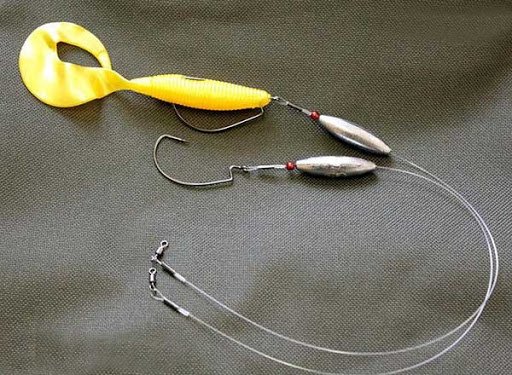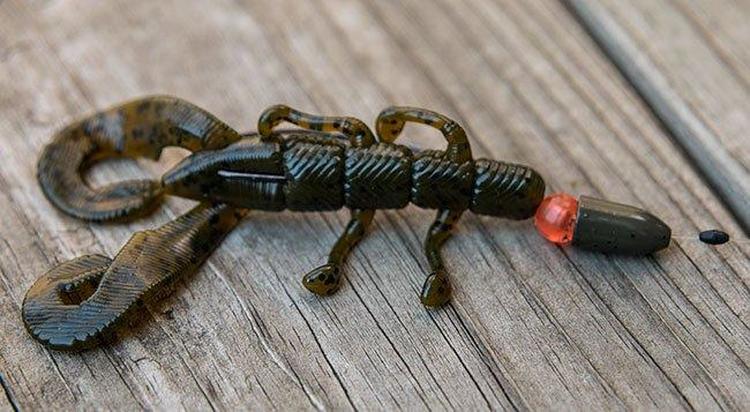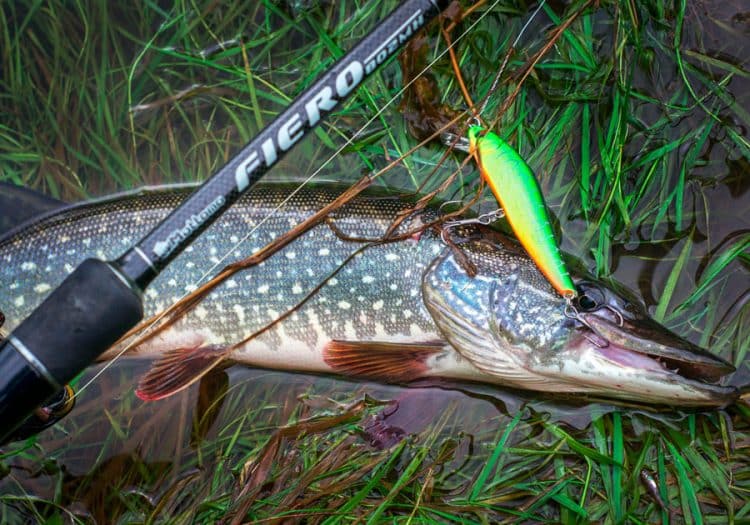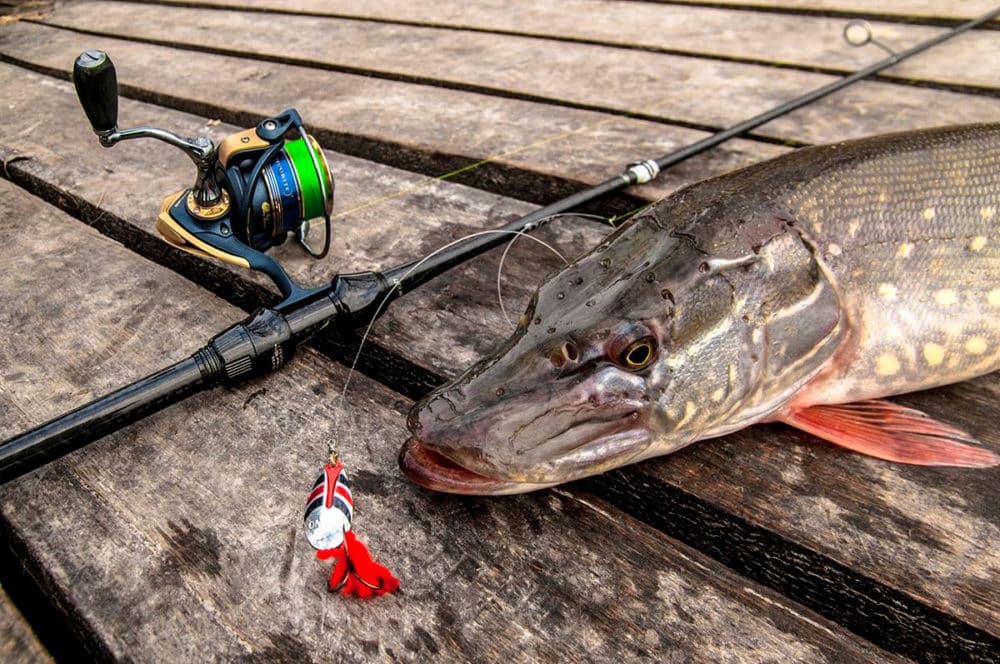It is no secret that predatory fish in most cases prefers to stick to “strong” places. Grass, cobweb, water lilies, snag, rocky ridges, fallen trees, flooded bridges and other underwater objects are a favorite place for parking and hunting for a predator, but bad luck – it is very difficult to catch him with a
regular jig there, constant breaks, hooks, idle wires. .. How to be in such a situation? Modern spinning anglers in such situations prefer to use relatively new, or long forgotten old, spaced-apart versions of jig rigs – drop-shot,
jig-rig ,
Tokyo-rig ,
diverter leash, Carolina and Texas rigs. All these types of mounting were invented and tested abroad for perch-bass by “zubugorny” colleagues-spinningists. Such assemblies allow you to fish in the most difficult-to-reach places using silicone lures equipped with offset hooks. Each rig is good for certain conditions and is designed to be used in different situations. Today we are going to talk about one of the most famous and long-used “spacers” – the Texas rig (it has been heard by conscious and experienced anglers for more than 50 years). The Texas rig (texas rig, texas rig) is used by spinners for the maximum cross-country ability of the bait in overgrown and cluttered waters. Has the simplest design among other spaced rigs, consisting of a bullet-shaped sliding in-line sinker,offset hook with bait and beads. According to the degree of anti-snagging, it is considered the best along with the Caroline.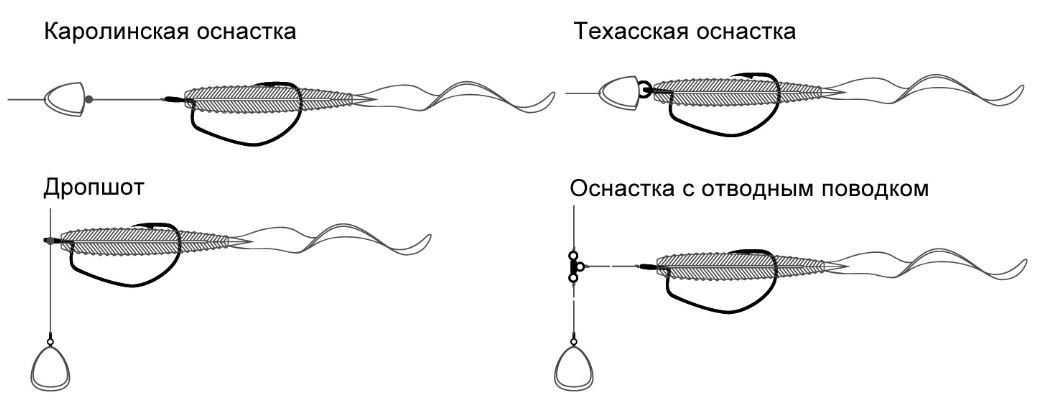
Karolinka and Texas – what’s the difference? It consists in the fact that in a Texas rig, the weight is close to the bait, and in a Caroline rig, at some distance from it, on a leash attached through a swivel. This difference also determines in which places texass and carolina should be applied. For the former, it is optimal to use it in snags and algae, while a carolina, due to a long leash, will often get confused in snags and breaks are inevitable, and it also collects spiderweed algae on a leash faster than texas rig, which passes areas with aquatic vegetation without problems. But the deposits of shell rock, pebbles and stones at the bottom are the fiefdom of the Karolinska rig, during the wiring of which the weight-bullet drags along the bottom, successfully overcoming obstacles. There is no need to try to replace one with another – everything has its place and purpose.
https://youtu.be/LrHYI2pj3V4
What is the strength of texas rig?
Fishing with a Texas rig is especially relevant in tight places, where it has no competitors in terms of flotation. This is perhaps the main advantages of this type of installation, but there are others:
- When posting a texas rig, the bait jumps at the very bottom, or drags along it , are two of the most working types of animation, especially for passive fish.
- Does not collect “thread” , due to the projected shape.
- Very quick and easy assembly of the assembly and its replacement if necessary.
- On the Texas rig, you can catch most of the predators of the middle zone of the Russian Federation and the CIS – perch, pike, pike perch at the bottom, chub and asp, if necessary, by wave-like wiring in the water column.
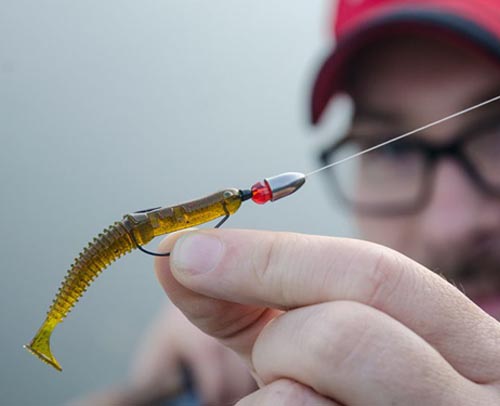
Installing a Texas rig: what is needed to make a texas rig
To make a Texas rig, you will need a tackle with a main cord, a bead, a bullet load with a recess, an offset hook, and baits.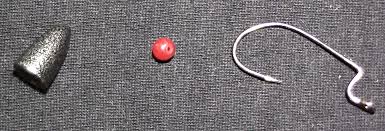

micro-jig , on bullets weighing 8-15 perches, pike-perch, pikes, on more solid ones weighing 20 or more grams, more serious specimens on serious reservoirs with great depths. The offset hook, its length, is matched to the size of the bait, and its height so that when biting, the sting comes out freely from the body of the bait; installation of silicone on offset is carried out as follows: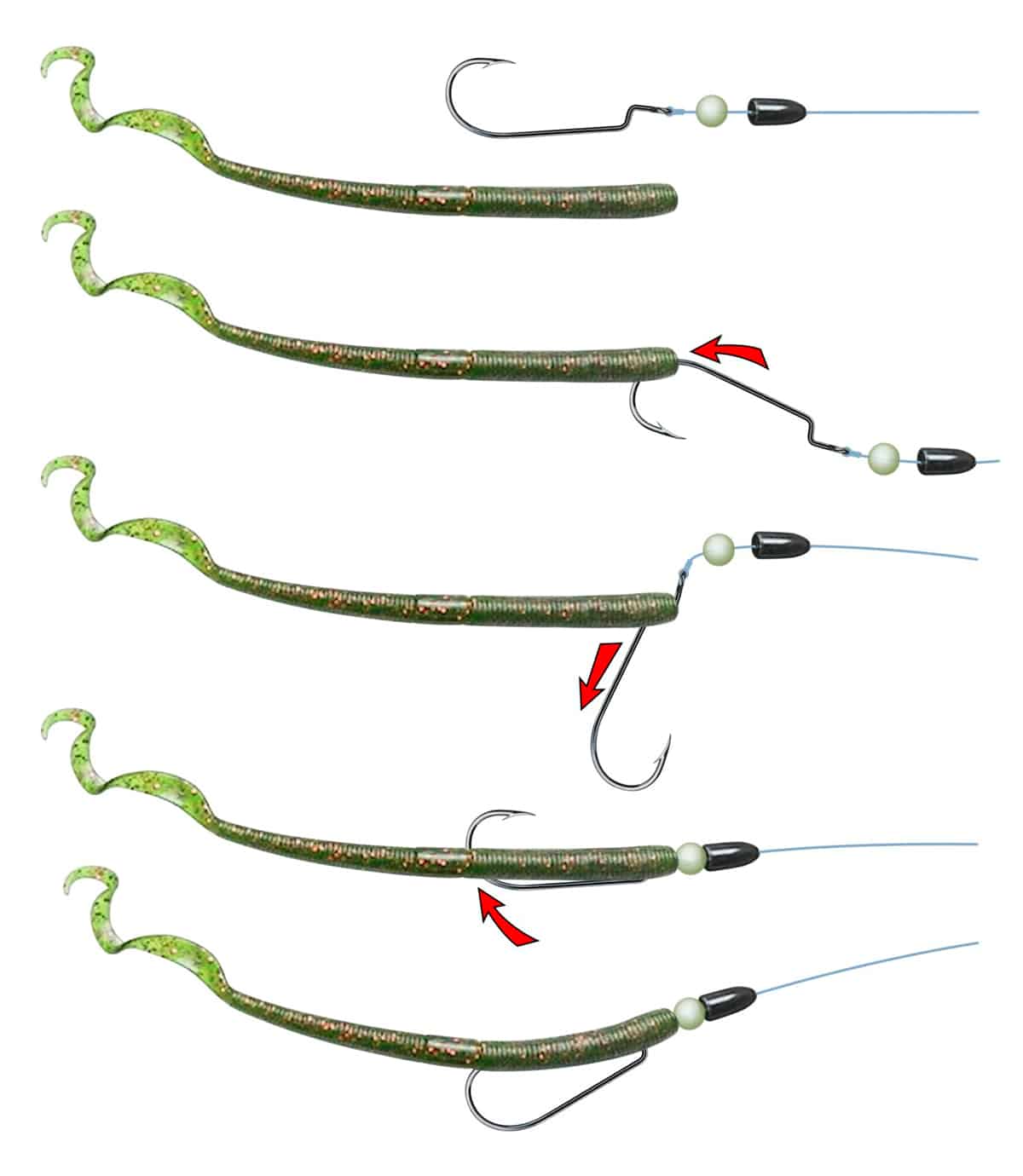
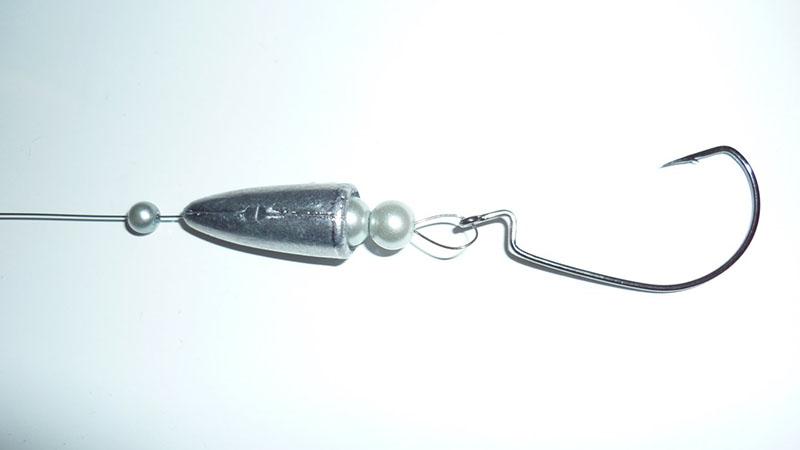
Important! If fishing takes place in very difficult places, then when equipping the bait on an offset bait, it is worth placing it so that the sting is completely hidden in the back of the bait, but it is easily squeezed out when you press on the silicone body – this will provide almost complete non-engagement (except in rare cases, but nevertheless possible overlaps for the obstacle with the fluor above the load). If the number of hooks is minimal, then it can be equipped so that the sting is 1-2 mm higher than the body of the bait.
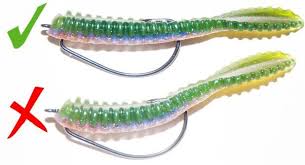
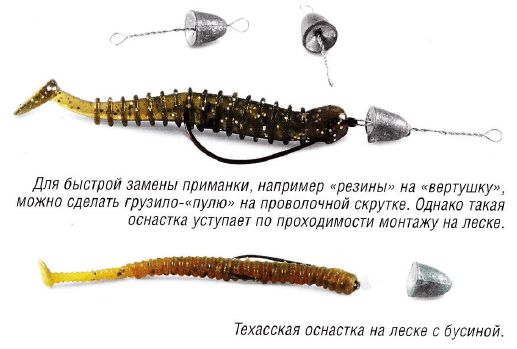 Another type of installation – not the most optimal, but more versatile and with a long front ear can be used on a pike [/ caption]
Another type of installation – not the most optimal, but more versatile and with a long front ear can be used on a pike [/ caption]
Lures for texas
There are many different uses for Texas rig silicone. But most often these are narrow-bodied edible worms, slugs, runny rippers and twisters.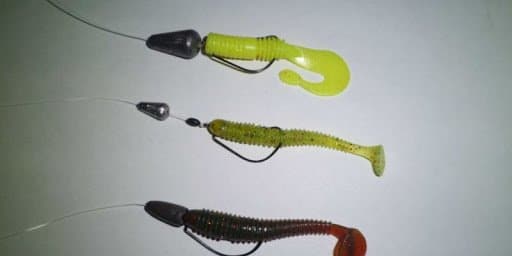
Technique for catching predatory fish with Texas rig – perch, pike, pike perch
It is very convenient to fish in Texas loaded with snags and algae, slowly flowing pits and pits, curbs, as well as water areas where the bottom is strewn with various debris – branches, fallen leaves, shells … Often in such places, a pike, large perch, catfish, zander. The animation can be performed by pulling the rod, the more active the fish, the more angry and aggressive these pulls can be. On a passive predator, you should choose lazy broaches along the bottom with pauses and wiggles with the tip of the rod using twitching during a pause.
Texas pike and perch rig
In practice, such a wiring of a Texas rig – lazy broaches with pauses and throws with a rod showed the greatest efficiency for pike and large perch.
On more or less clean areas, it is possible to use a standard jig step. This type of harnessing of Texas rig also gives good results when fishing for pike and perch. Running a Texas rig on stream involves the use of upstream or cross-stream demolition casts. Animation – dragging along the bottom, light explosions and a classic rung if needed. If the fish is not at the very bottom, but in the grass, you can use a
pelagic jig , but with the use of Texass rig. When fishing in water lilies, there is also a working option – throwing water lilies onto the canvas, pull them off the sheet and let them fall through the window of clean water, make a step along the clean window and again throw the bait onto the sheet and repeat all the steps until the bite. 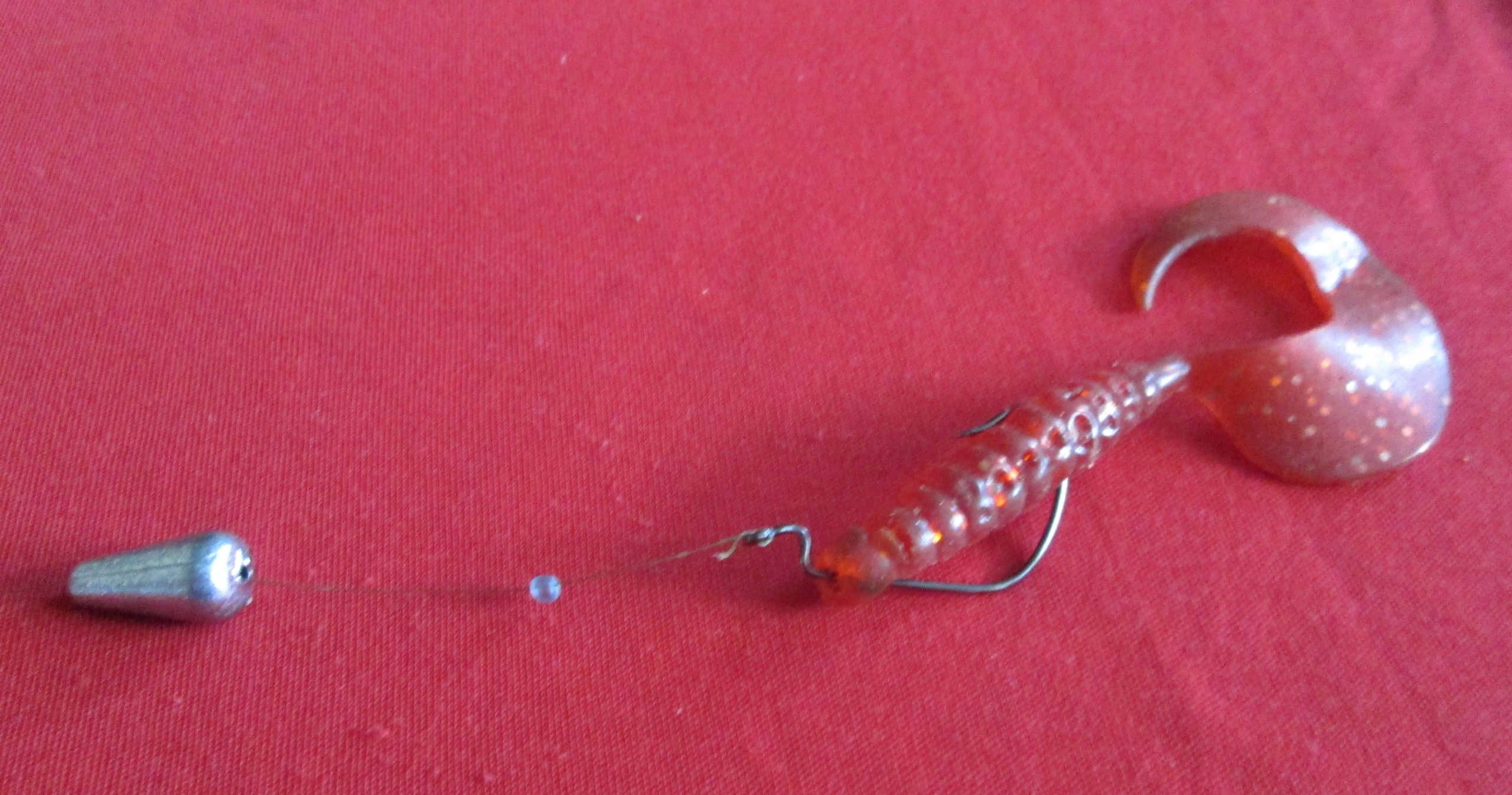
Pike perch on a Texas rig
This predator prefers a clean and hard bottom without grassy growth – sand, pebbles, shell rock. For this reason, when fishing for zander, it is imperative to use a fluor that better withstands the effects of an aggressive environment. The use of leash materials, of course, is not required.
If fishing is carried out on edible silicone with a taste / smell not superfluous after the bite, it will take a short pause of 5-10 seconds to allow the fish to take the bait deeper, especially if the sting is well sunk into the silicone body.
Video on how to fish perch and zander with Texas rig: https://youtu.be/yKQHYR8hdi8
About tackle
When fishing with texas, it is customary to use fluorocarbon or monofilament fishing line, in view of the fact that a sliding bullet, with constant sliding, and, accordingly, friction with the braid, quickly renders the latter unusable, fluffing it up and significantly reducing its strength. And the fluor is very wear-resistant and practically does not lend itself to external influence. The second is quite an important nuance – with such fishing, constant contact of the carrier line with the bottom is implied, since it is often not a jig step that is used, but possible types of dragging. And the cord is very afraid of constant contact with the sandy bottom, pebbles, shell rock.
These factors are generally more important when fishing with Carolina, due to the fact that there is a free movement of the load and the length of the leash is greater, but in this rig you can use only a fluor leash, and on the basis, nevertheless, if you wish, take a braid.
The diameter of the fluor used is 0.25-0.35 mm (gap in the region of 5-7 kg) when fishing for zander and perch, up to 0.5 (up to 12 kg) when fishing for pike.
You can also use a braid with a diameter of 0.15-0.20 mm for a pike, provided that the installation is created on the basis of an iron leash.
Monofilament line is also worse than fluor, due to the fact that the monofilament stretches, which interferes with quality control when placing the bait, as well as timely striking. Hence the requirement for the coil – it is better to use a multiplier, which works much better with fluor, than a spinning coil.